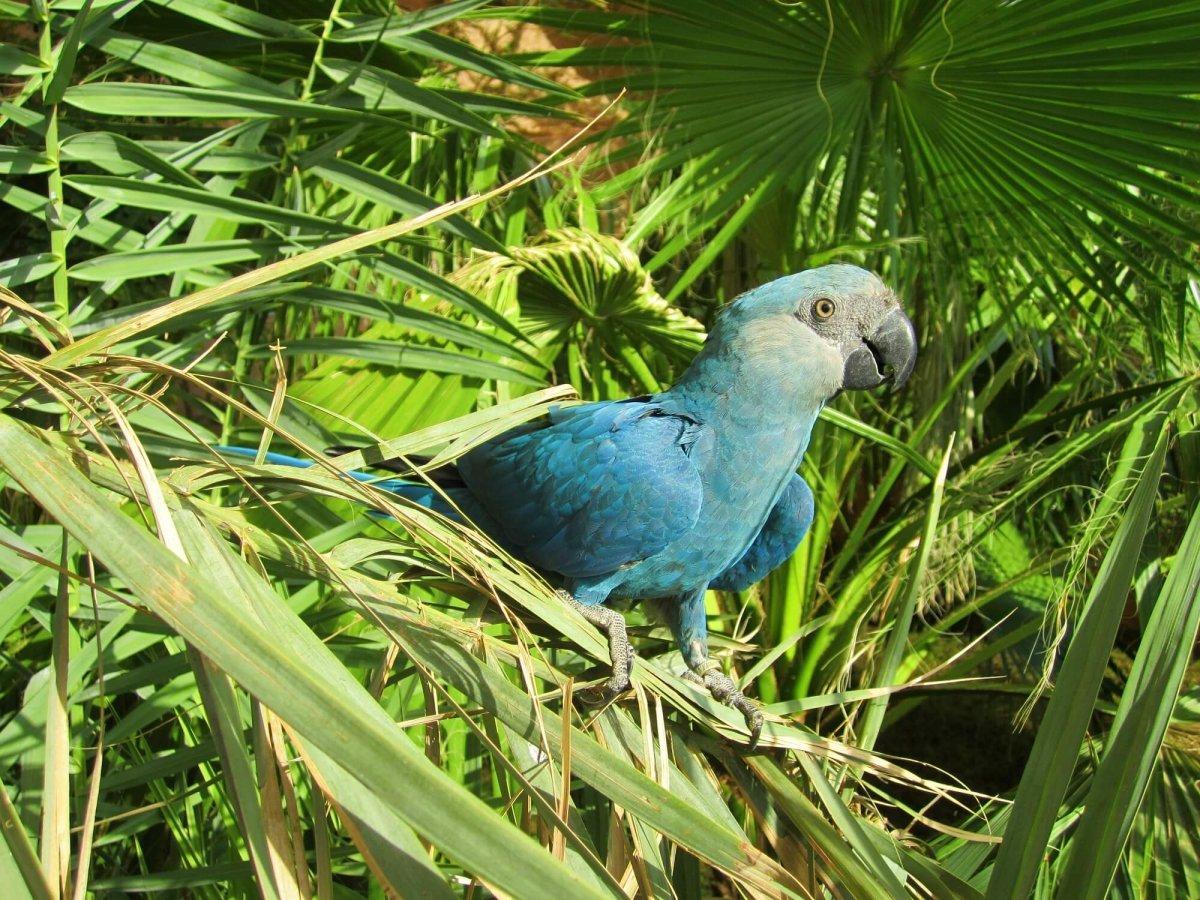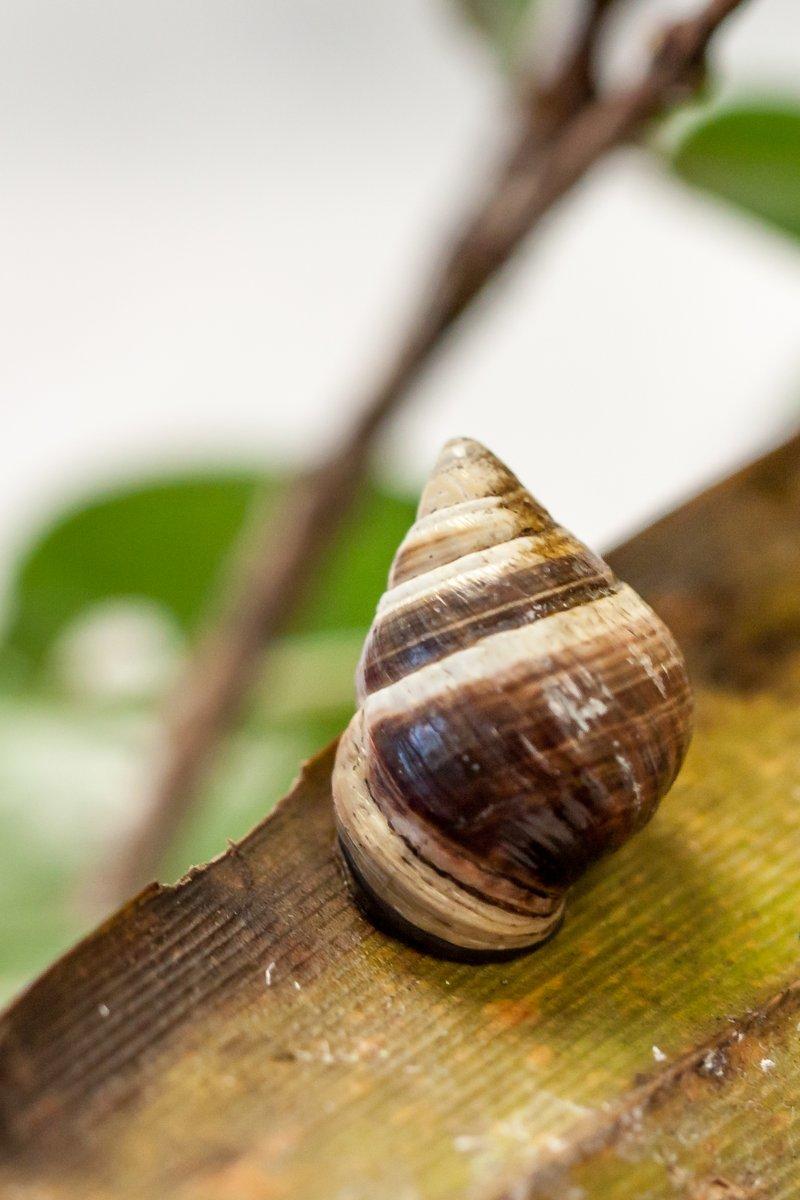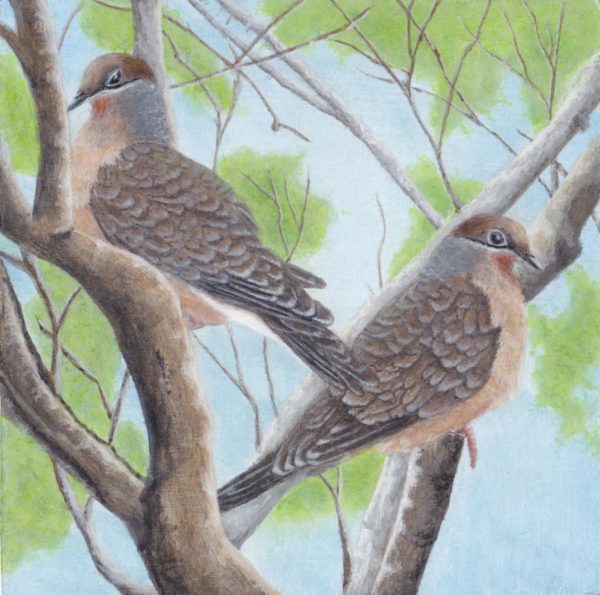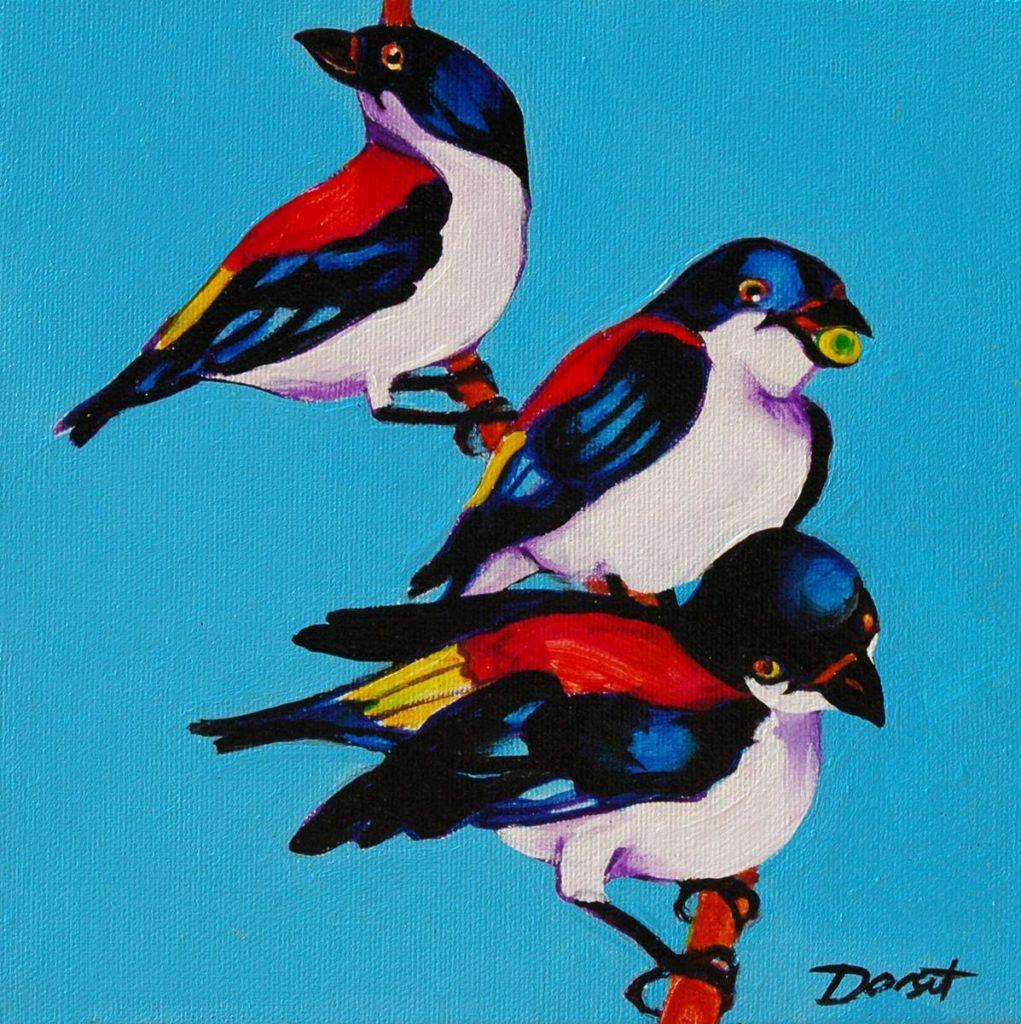•In 2018, Spix’s Macaw was officially declared extinct in the wild, with three other species possibly extinct.
•The Philippines has a number of rare and endemic species that, while not as popular as the Philippine eagle and the tamaraw, certainly deserve attention.
•Each species, no matter how small or seemingly insignificant, has an important role to play in the ecosystem, and thus deserves our protection.
(Updated on January 9, 2021) In 2018, a number of rare bird species officially went extinct. One of them, Spix’s Macaw (Cyanopsitta spixii), made headlines in early September, largely because of its popularity as the star of a hit animated film.

Spix’s Macaw was officially declared extinct in the wild, but it has not been completely wiped out yet. A few of them still exist in captivity, and scientists are doing their best to help them repopulate.
Other bird species, however, weren’t so fortunate.
The Cryptic Treehunter (Cichlocolaptes mazarbarnetti) and the Alagoas Foliage-gleaner (Philydor novaesi) both hail from northeast Brazil. The former has not been spotted since 2007; the latter was last seen in 2011. Meanwhile, the Poo-uli (Melamprosops phaeosoma) was last seen in the wild in 2004–the same year the last captive specimen died. As a result, conservationists at BirdLife International believe that the three species should be reclassified as Extinct, with another four species reclassified as Critically Endangered (Possibly Extinct).
On the non-avian side of things, the last male northern white rhinoceros (Ceratotherium simum cottoni) died in March 2018, leaving the species with no means of natural reproduction. The southern rhinos aren’t doing so well, either, inching closer and closer to Vulnerable status with each passing year.

Meanwhile, the last known living Achatinella apexfulva, George,died on January 1, 2019. The last of his species, George’s death also highlights the plight of other species of Hawaiian molluscs, which are rapidly dwindling in number.
Critically endangered species in the Philippines
Here in the Philippines, we have quite a few species of our own that are in danger of going extinct. The more well-known species, such as the Philippine eagle (Pithecophaga jefferyi) and the tamaraw (Bubalus mindorensis), are typically the ones who receive more attention from the public. However, many lesser-known, critically endangered species deserve our concern (and conservation efforts) as well. Here are five of them.
Philippine Forest Turtle (Siebenrockiella leytensis)

Habitat: Northern Palawan and surrounding islands
Estimated Number of Mature Individuals in the Wild: Unknown
This freshwater turtle is endemic to the Philippines, and goes by many names: the Palawan forest turtle, the Philippine pond turtle, or the Leyte pond turtle. (The last one is a misnomer, since it’s actually native to Palawan.) While the exact number of Philippine forest turtles in existence is unknown, it is quite apparent that their population is declining. A significant factor in this is the fact that they tend to be smuggled and sold illegally as pets in the Philippines and in China. Since these creatures are easily stressed and the males of the species are highly territorial and aggressive, they do not thrive in captivity.
Cebu Brown Dove (Phapitreron frontalis)

Habitat: Cebu
Estimated Number of Mature Individuals in the Wild: Possibly below 50
Due to the deterioration and destruction of its natural forest habitat, the Cebu brown dove has been in dire straits since its identification. Apart from a possible sighting in 2004 and unconfirmed reports from 2007 to 2012, there is not enough evidence to claim that it is Extinct. Hence, it has been classified as Critically Endangered.
Negros Fruit-Dove (Ptilinopus arcanus)

Habitat: Negros (and possibly Panay)
Estimated Number of Mature Individuals in the Wild: Below 50
Known only by a single female specimen collected in 1953, this endemic bird is a rare sight. When researchers unexpectedly found threatened species from Negros on Panay, there was some hope that the Negros fruit-dove would be found there as well.
Cebu Flowerpecker (Dicaeum quadricolor)

Habitat: Cebu
Estimated Number of Mature Individuals in the Wild: Between 60 to 70
Endemic to Cebu, this type of flowerpecker was rediscovered in 1992, after years of being thought extinct. It lost much of its habitat in the 1900s due to deforestation.
Gigante Wrinkled Ground Frog (Platymantis insulatus)

Habitat: South Gigante Island, Panay
Estimated Number of Mature Individuals in the Wild: Unknown
This amphibian lives on South Gigante Island near Panay, within limestone-rich rock formations called karsts. Like the birds on this list, the primary threat to its continued survival is the loss of its habitat.
Why should we care?
“We all play an important role in this world, no matter how small or insignificant we think it is,” said biodiversity conservationist Lisa Paguntalan in an interview with FlipScience.
Paguntalan explained that even the lowly earthworm is a crucial part of the ecosystem. For starters, it is vital to agriculture, because it plays a major role in enriching the soil. Aside from that, it serves as a major food source for many endemic Philippine species, such as forest kingfishers and various rodents. Meanwhile, molluscs and amphibians (such as the Gigante wrinkled ground frog) consume the algae in rivers and streams, keeping the waters clean and healthy.
“A removal of one impacts the other,” stressed Paguntalan. “And the chain of effects may even be far greater than anticipated.”
The renowned biodiversity expert added that many of these valuable species are single-island endemics, found solely within the handful of remaining forests across the Philippines. The combined, unique biodiversity of each of these islands is what makes the Philippines a “mega-diverse” country. And with more and more species discovered each year, it seems we’ve barely even scratched the surface.
“Not many places in the world have been bestowed with such abundance,” stated Paguntalan. “Is it not the role of the Filipino to take care of what is ours? If we don’t, how can we expect other countries to respect our wildlife, our heritage?”
Editor’s note: An earlier version of this article included a photo of the red-keeled flowerpecker instead of the Cebu flowerpecker.
Cover photo: Pierre Fidenci
References
- https://www.theloop.ca/uh-oh-these-are-the-animals-that-went-extinct-in-2018/
- https://www.birdlife.org/worldwide/news/spixs-macaw-heads-list-first-bird-extinctions-set-be-confirmed-decade
- https://www.nationalgeographic.com/animals/2019/01/george-the-lonely-snail-dies-in-hawaii-extinction
- https://www.iucnredlist.org/species/39599/97378088
- https://www.iucnredlist.org/species/60543516/117228230
- https://www.iucnredlist.org/species/22691568/93316693
- https://www.iucnredlist.org/species/22717507/134203874
- https://www.iucnredlist.org/species/22694585/131118818
- https://www.iucnredlist.org/species/17519/58473068
- http://datazone.birdlife.org/species/factsheet/Cebu-Brown-dove-Phapitreron-frontalis
- https://philippineendangered.wordpress.com/negros-fruit-dove/
Author: Mikael Angelo Francisco
Bitten by the science writing bug, Mikael has years of writing and editorial experience under his belt. As the editor-in-chief of FlipScience, Mikael has sworn to help make science more fun and interesting for geeky readers and casual audiences alike.







